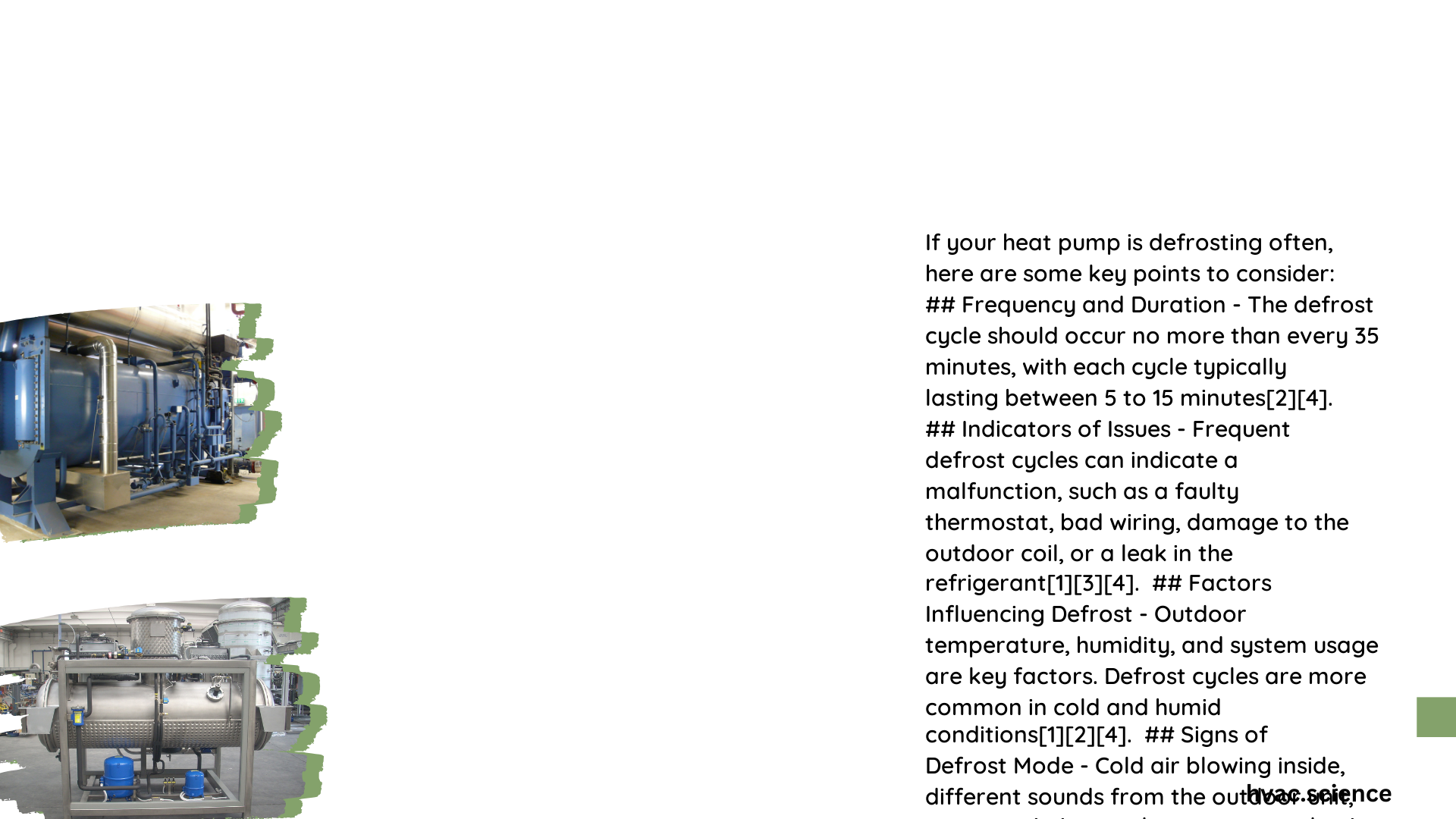Heat pump defrosting often is a common issue that can impact system efficiency and performance. Frequent defrost cycles occur when frost accumulates on the outdoor coil, reducing heat transfer. This problem is typically caused by environmental factors like high humidity and low temperatures, or system malfunctions such as faulty sensors or refrigerant leaks. Understanding the causes and implementing proper maintenance can help minimize unnecessary defrost cycles and improve overall heat pump efficiency.
Why Does My Heat Pump Defrost So Frequently?
Heat pumps defrost frequently due to a combination of environmental conditions and potential system issues. The primary factors include:
- Low outdoor temperatures (below 32°F)
- High humidity levels
- Faulty defrost sensors
- Refrigerant leaks
- Improper installation
- Damaged or clogged coils
In humid climates, defrost cycles are more common due to increased moisture in the air. Conversely, dry climates experience less frequent defrosting.
What Is the Optimal Duration for a Heat Pump Defrost Cycle?

The ideal heat pump defrost cycle duration balances effectiveness with energy efficiency:
- Typical duration: 10 minutes or less
- Target temperature: 57°F to 58°F for the outdoor coil
- Operation: Reverse cycle to warm the outdoor coil and melt frost
Manufacturers design defrost cycles to be as short as possible while still effectively removing frost or ice from the outdoor coil.
How Do Environmental Conditions Affect Defrost Frequency?
Environmental factors play a crucial role in determining how often a heat pump needs to defrost:
| Factor | Impact on Defrost Frequency |
|---|---|
| Temperature | Increases as temperature drops below 32°F |
| Humidity | Higher humidity leads to more frequent defrosting |
| Climate | Humid climates require more defrosting than dry climates |
| Shade | Units in shady areas may need more frequent defrosting |
| Snowfall | High snowfall areas may require more defrost cycles |
What System Malfunctions Can Cause Frequent Defrosting?
Several system issues can lead to more frequent defrost cycles:
- Faulty sensors: Incorrect readings can trigger unnecessary defrost cycles
- Refrigerant leaks: Reduced efficiency can increase the need for defrosting
- Electrical problems: Disruptions in normal operation can affect defrost cycles
- Improper installation: Incorrect unit sizing can lead to inefficient operation
- Damaged coils: Impaired heat exchange can increase frost buildup
How Can I Adjust My Heat Pump to Minimize Unnecessary Defrost Cycles?
To optimize your heat pump’s defrost cycles:
- Adjust defrost timer settings:
- 30 minutes for colder, humid climates
- 60 minutes for moderate conditions
-
90 minutes for milder climates
-
Consider local weather patterns when setting defrost intervals
- Ensure proper unit sizing for your space
- Maintain clear airflow around the outdoor unit
What Are Some Efficiency Tips for Heat Pump Defrosting?
Improve your heat pump’s defrosting efficiency with these tips:
Maintenance
- Regularly clear snow and debris from the outdoor unit
- Change air filters as recommended by the manufacturer
- Schedule professional maintenance checks
System Adjustments
- Verify correct heat pump sizing for your space
- Improve home insulation to reduce heat load
Cost-Effective Solutions
- Install visual indicators (e.g., blinking lights) to monitor defrost cycles
- Consider adding interior heating elements for older systems to prevent cool air distribution during defrost
By implementing these strategies, you can minimize unnecessary defrost cycles, improve system efficiency, and potentially reduce energy costs associated with frequent heat pump defrosting.
References:
1. Day & Night Air Conditioning, Furnace & Plumbing
2. Snyder Air Conditioning, Plumbing & Electric
3. InterNACHI
